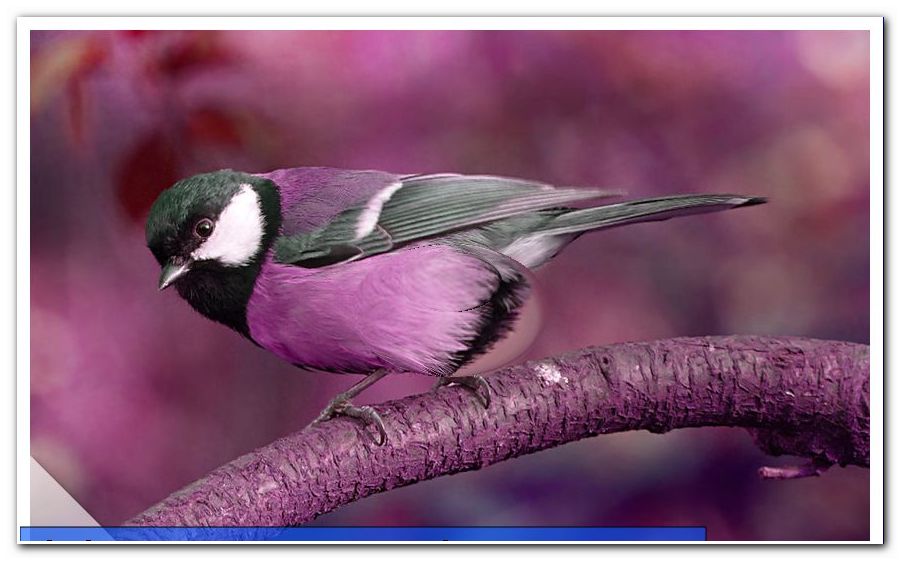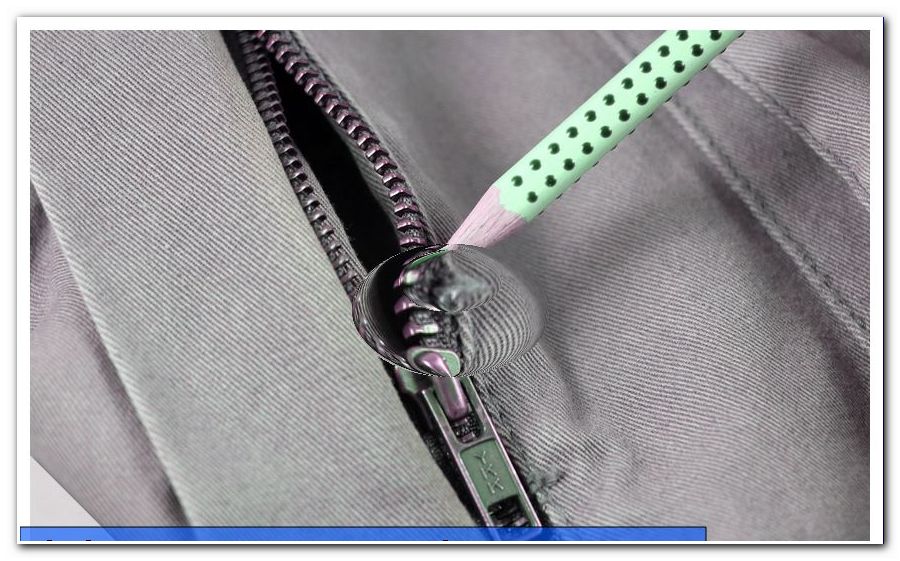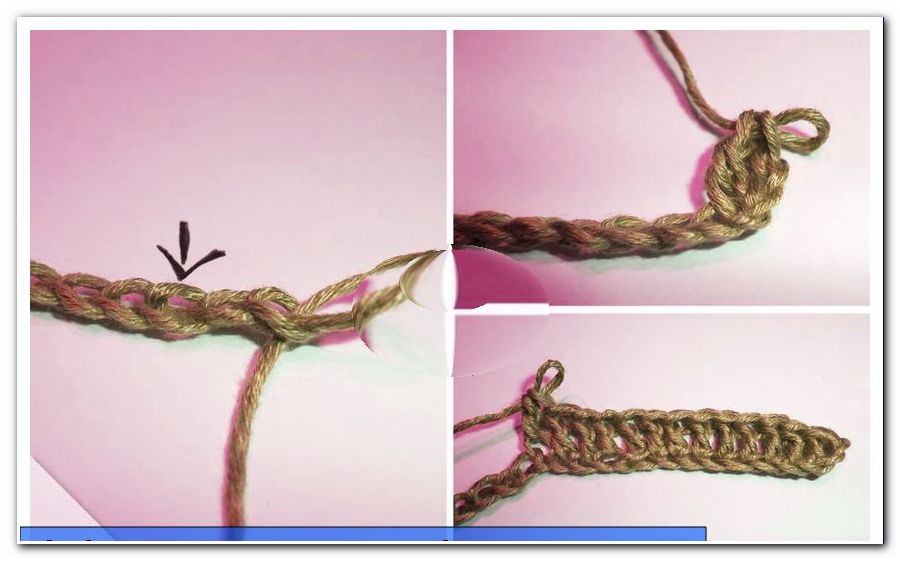Plaster plaster, paint or paper plaster

- Materials and the tool
- preparation
- Plaster plasterboard
- Paper plasterboard
- Paint plasterboard
Rigips can be painted in a variety of colors and thus allows a variety of design options. However, the plasterboard usually has an uneven and unsightly structure, which could be seen under a simple coat of paint. The fact that different panels are put together creates transitions and joints that need to be treated. Read about the steps involved in preparation and painting.
If the paint were applied directly to the plasterboard, then all the holes in the area of the screws, the joints and the transitions to the ceiling and floor would be visible. Therefore, it is necessary to work first of all. In the first step, putty is applied and then the wall is sanded. Then you have the choice whether you want to apply plaster, paint the drywall directly or wallpaper the plasterboard. If you opt for a plaster, then the rolling plaster is applied quickly and easily. When wallpapering, be sure to pick a wallpaper that can be overpainted.
Materials and the tool
To brush:
- colour
- Masking tape for masking
- Painters film
- Adhesive or Tiefengrund
- Brush, roll
plaster
- plaster
- Sheepskin Roller
- trowel
paperhanging
- wallpaper
- primer
- wallpaper adhesive
- brush
- brush
- Scissors or knife
- Trestle table
preparation
There are some differences between painting a classic wall and a plasterboard wall. The most important point is the high-quality finish of the plasterboard wall, which must not be omitted in any case. A common problem is that even after painting, bumps on the wall can remain visible. Of course, this depends on the preliminary work, ie the filling and sanding. When wallpapering or plastering bumps are compensated and are therefore usually not visible.

Before you can continue working on the wall, you must start filling. This step is used to seal unevenness, joints and holes. Here, precise work is particularly important, since the basis for the later following color layer is created.
Steps for filling:
- Free the wall of dust
- Mix the filler
- Prepare to fill in gaps
- Post-filling to refine the surface texture
- Corners are provided
- Sanding, sanding, sanding
- prime
Detailed instructions on filling and sanding plasterboard walls can be found here: fillet and polish with plaster
Tip: The better you trowel and sand, the more level the wall surface becomes. With a painted plasterboard wall, bumps quickly become visible.
Plaster plasterboard
You have the choice of different plasters, such as a machine plaster or a roller coaster . For the machine plaster you need appropriate equipment, the rolling plaster is applied by hand with a roller. The simplest variant is a mineral-containing rolling plaster that can be applied with a lamb roller. On the other hand, if you use a quast and apply the plaster in a circular motion, an antique look appears on the plasterboard. On the other hand, if you prefer a particularly smooth plaster, then Venetian trowels are suitable.

Tip: Venetian trowels ensure a particularly smooth result.
The plaster can be mixed according to the instructions in a bucket or in a cleaning tub. If you have opted for a rolling plaster, then this is easy to work with. For applying you can use a lambskin scooter. Pay attention to a uniform order.
Tip: If you prefer a varied structure, apply the plaster with the puff and perform semi-circular movements. This creates a rustic look.
If you want to work with the trowel, first apply a small amount of plaster to the trowel with the spatula. Now spread the plaster in rapid movements on the wall and make sure to work cross-shaped. The movements are unusual at the beginning and for the optimal result a little exercise is necessary. But after a short time, the new way of working is learned.
- Step: Prepare the plaster
Before you apply the rolling plaster, you must stir it. For this purpose, a drill with a Rührquirl is optimal. However, work at a low speed. You can apply the plaster either in nature or with a suitable color. To do this, add a special plaster tinting paint to the rolling plaster and thoroughly mix the plaster with the paint. Make sure that no more streaks are visible, then the color has spread enough.

- Step: Apply the plaster
Now the roll plaster can be applied. If you use a scooter, first moisten it with a little water. As a result, the plaster is better absorbed and the result is even. Roll the plaster evenly and make sure to always work in the same direction. The Streichroller creates a structure that can influence you. If a certain structure is desired, it must be generated no later than 15 minutes after applying the plaster. You have various options for this, such as working with structural rollers, flat brushes or round brushes. There are no limits to your imagination, so you can get creative. Of course, you can also opt for a uniform structure.

Avoid light switches and sockets
A special feature are light switches and sockets. If these were installed, then a separate treatment is necessary. A common practice is the use of tape for masking the switches and cans. Attach the tape carefully, the taped areas will remain clear of the plaster later. Since the plaster hardens and may not bond too strongly with the tape, you must remove the adhesive immediately after plastering .
As an alternative to cleaning, you can also wallpaper the plasterboard.
Paper plasterboard
An alternative to plastering is papering. This also creates a level and advantageous surface. After applying a primer to the wall as needed and drying it, wallpapering can begin.

Proceed as follows:
- Mix in a bucket or a small tub the wallpaper glue. When choosing make sure that it is suitable for the ground.
- Place the wallpaper with the motif side down on the papering table.
- Measure the required length of the wallpaper and cut the wallpaper with scissors or a knife. (Picture from the cut of the wallpaper)
- Apply the wallpaper adhesive to the wallpaper with a brush. (Picture of applying wallpaper adhesive)
- Fold the lower half of the wallpaper loosely upwards so that the adhesive surfaces meet. From now on you have to work quickly. (Picture of the folded wallpaper)
- Place the upper part of the wallpaper on the wall. Smooth the top of the wallpaper with the brush. (Picture from setting the wallpaper)
- Fold out the lower part of the wallpaper again and brush the wallpaper straight with the brush from top to bottom with short oblique movements. Avoid air holes under the wallpaper. (Image from wallpaper smooth)
- Now work the remaining air holes laterally out of the way with the brush.
Tip: Cover the floor with a foil and glue the light switches and sockets with adhesive tape.
Paint plasterboard
To paint the Rigips, you can use a lamb roller . The paint should be applied thinly and evenly. It is important to work without pressure.

Tip: Use a drip grid. After you have scored the roller into the paint, paint it on the drip grid.
- Empty the room as much as possible. Furniture left in the room will be covered with painters film. Moldings and other objects can be masked with adhesive tape.
- Depending on the selected substrate, the use of a primer is recommended. For example, if it is a non-absorbent and smooth interior plaster, then priming with the primer is necessary. If, on the other hand, a subsoil has been created, then you should have a deep background. The necessary drying time varies with the individual products and must always be adhered to.
- The paint is applied crosswise to the plaster. Start by painting the wall from top to bottom. Immediately afterwards, swipe from right to left or alternatively from left to right. It is important that you always wet the wall wet. Otherwise, it leads to the formation of ugly transitions. Allow the wall to dry thoroughly after the first strike.
- Paint the Rigips wall a second time using the same principle.
Tips for quick readers:
- Use a brush to remove dirt from the plasterboard
- Apply putty and grind
- Use primer
- Use primer or deep primer
- Apply plaster or apply wallpaper or paint




